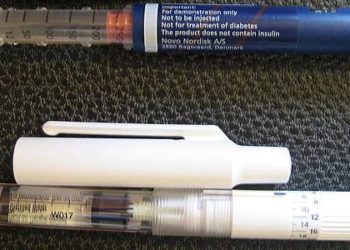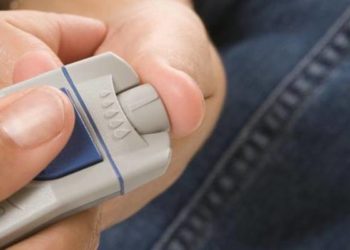Individualized screening for diabetic retinopathy with fundoscopy and HbA1c
1. Risk of developing clinically significant diabetic retinopathy or macular edema over specified timeframes can be modeled using fundal exam and hemoglobin A1c (HbA1c) results for patients with type 1 diabetes (T1DM).
2. Modeled probabilities for development of retinopathy or macular edema can reduce frequency of eye exams while maintaining ability for timely diagnosis of disease.
Evidence Rating: 2 (Good)
Study Rundown: A complication of diabetes which contributes significantly to blindness is retinopathy. Current screening methods for type 1 diabetic retinopathy are annual ophthalmology sessions with fundal examination starting 3 to 5 years after initial diabetes diagnosis. These screening recommendations are based on outdated data, and there remains potential to develop individualized screening programs which would more efficiently detect diabetic pathologies effecting vision. To do this, the study assessed cohorts of T1DM patients and modeled their progression towards vision-threatening pathology based on routine follow-up.
The study assessed two large T1DM patient cohorts followed for 29 years. Patients received diabetic care and received regular photographed fundal exams. Patient’s degree of retinal pathology was rated from 1 to 5, with 1 being no retinopathy and 5 representing severe retinopathy. Medical evaluation was performed to assess for potential retinopathy risk factors. Using a statistical modeling technique, the estimated time for a patient to develop state 5 disease was modeled based on patient’s presenting with state 1 to 4 fundal exams, and can be further individualized based on a patient’s HbA1c levels. This work allows for projection of when a patient may develop state 5 disease, and therefore would allow providers to individualize patient follow-up to efficiently detect severe retinopathy.
Click to read the study, published in NEJM
Relevant Reading: Diabetic retinopathy and other ocular findings in the diabetes control and complications trial/epidemiology of diabetes interventions and complications study
In-Depth [retrospective cohort]: The work included 1375 patients with T1DM who participated in two related studies running from 1983 to 2012 (Diabetes Control and Complications Trial; Epidemiology of Diabetes Interventions and Complications). Patients were followed at regular intervals, generally of 4 years, with medical examination which included both photographed fundal exams and evaluation of potential retinopathy risk factors like HbA1c, BMI, and smoking status. Photos of each patient’s fundal exams were evaluated and rated on a scale of 1 to 5, with 1 representing no retinopathy and 5 representing severe pathology such as diabetic retinopathy or macular edema. Of the patient’s included in the study, mean follow-up was 23.5 years. A longitudinal Markov modeling technique was used to estimate probability of progression to state 5 disease from original states of 1 to 4, with emphasis placed on 5% probability.
The probability of progressing to state 5 diseases was 4.5% (95%CI 4.1-5.0) over 5 years, 3.7% (95%CI 3.4-4.1) over 3 years, 6.6% (95%CI 6.0-7.3) over 6 months, and 14.4% (95%CI 9.4-22.0) over 3 months for patients with fundal exams of state 1, 2, 3, and 4, respectively. Of the potential medical risk factors assessed, higher mean HbA1c values were determined to substantively increase probability of progression to state 5 disease. Using this information, probability for an individual patient to progress to state 5 retinal disease can be projected based on their fundal exam and HbA1c values. By recommending follow-up visits at 5 years, 3 years, 6 months, and 3 months for patients with state 1, 2, 3, and 4 fundal exams, respectively, the average time state 5 retinopathy may go undetected would be 0.42 years as compared to 0.61 years with annual exams for all patients.
Image: CC/Wiki
©2017 2 Minute Medicine, Inc. All rights reserved. No works may be reproduced without expressed written consent from 2 Minute Medicine, Inc. Inquire about licensing here. No article should be construed as medical advice and is not intended as such by the authors or by 2 Minute Medicine, Inc.







